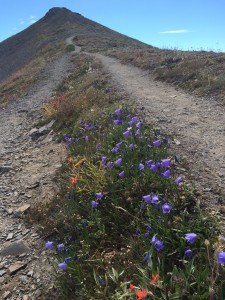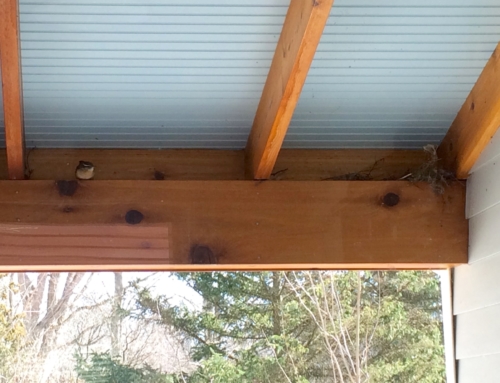 I photographed these flowers on Lillian Ridge in Washington state’s Olympic Mountains a couple of weeks ago, a place that remains buried, at least partially in snow, well into July. In fact, this trail crossed melting snow. I was able to scoop some up and make a soggy snowball. Glacier-draped Mt. Olympus looms large and Port Angeles, the nearest city–any city–feels nonexistent.
I photographed these flowers on Lillian Ridge in Washington state’s Olympic Mountains a couple of weeks ago, a place that remains buried, at least partially in snow, well into July. In fact, this trail crossed melting snow. I was able to scoop some up and make a soggy snowball. Glacier-draped Mt. Olympus looms large and Port Angeles, the nearest city–any city–feels nonexistent.
On Lillian Ridge, high alpine country closed by federal law to mechanical transport (It is dedicated wilderness—the Olympic Peninsula has one million acres of it) you measure distances in miles by foot and elevation gained and lost. You don’t expect to be comfortable and you remember what it’s like to be a person moving through land without roads. On every visit here, I’ve encountered people from 7 or 8 to 70 or 80. I might be projecting my own sense of well-being onto them, but they’ve all seemed pretty relaxed and happy. It’s hard to explain the way being away from intensive human settlement changes one’s experience of a landscape and the people in it, but if you’ve spent time in a roadless place, you know what I’m talking about.
(“Wilderness,” the word, comes to us burdened with associations that turn it into the enemy of indigenous peoples and, as a matter of fact, of beginning to repair the wrecked relationship human beings currently have with the natural systems that sustain all life. I’ll be writing more about that soon.)
The Wilderness Act is 50 years old this year. Here’s the portion that feels more important than ever.
From the 1964 Wilderness Act of the 88th Congress of the U.S.A.
“A wilderness, in contrast with those areas where man and his own works dominate thelandscape, is hereby recognized as an area where the earth and its community of life are untrammeled by man, where man himself is a visitor who does not remain. An area of wilderness is further defined to mean in this Act an area of undeveloped Federal land retaining its primeval character and influence, without permanent improvements or human habitation, which is protected and managed so as to preserve its natural conditions and which (1) generally appears to have been affected primarily by the forces of nature, with the imprint of man’s work substantially unnoticeable; (2) has outstanding opportunities for solitude or a primitive and unconfined type of recreation; (3) has at least five thousand acres of land or is of sufficient size as to make practicable its preservation and use in an unimpaired condition; and (4) may also contain ecological, geological, or other features of scientific, educational, scenic, or historical value.”
(I do wish we could dispense, at long last, with this “man” stuff.)
I like the late wildlife professor Aldo Leopold‘s definition even better: Wilderness, he wrote in A Sand County Almanac (1949), is an area expansive enough to absorb a two-week pack trip on horseback.
I can’t imagine living in a world where such places don’t exist.
You can read the whole Wilderness Act here, and click here to read more about harebells.









Leave A Comment